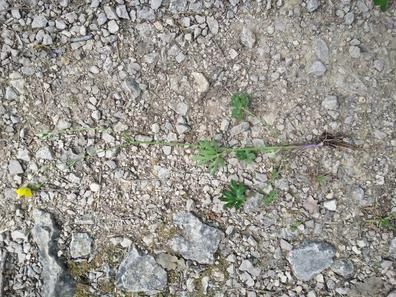Woodland Buttercup
(Ranunculus polyanthemos subsp. nemorosus)
Woodland Buttercup (Ranunculus polyanthemos subsp. nemorosus)
/
/

Stefan.lefnaer
CC BY-SA 4.0
Image By:
Stefan.lefnaer
Recorded By:
Copyright:
CC BY-SA 4.0
Copyright Notice:
Photo by: Stefan.lefnaer | License Type: CC BY-SA 4.0 | License URL: https://creativecommons.org/licenses/by-sa/4.0 | Uploader: Stefan.lefnaer | Publisher: Wikipedia Commons

Estimated Native Range
Climate Requirements for Pflugerville, Texas
| This Plant | Your Site | Plant Suitability for Your Location | ||
|---|---|---|---|---|
| • Precipitation | 47" - 56" | 33" | Your precipitation may be insufficient for this plant. Irrigate N" / year. | Irrigate N" / year |
| • High Temp. | 67°F - 78°F | 96°F | Your summers may be too hot for this plant. | Too hot |
| • Low Temp. | 22°F - 35°F | 37°F | Your winter temperatures are normal for this plant | Excellent |
This plant should grow well at your location with about N inches per year (Y minutes per month) of irrigation.
Summary
Ranunculus polyanthemos subsp. nemorosus, commonly known as Woodland Buttercup, Meadow Buttercup, or Many-flowered Buttercup, is a perennial herb that thrives in the dappled sunlight of forest clearings and the moist conditions of meadows across Europe and Western Asia. It is particularly adapted to clay soils, which are often rich in nutrients and retain moisture well. This species exhibits a moderate growth rate, reaching a height and width of approximately 0.5-1 feet (0.15-0.3 meters). The plant is characterized by its glossy, green foliage and vibrant yellow flowers that are quite showy, blooming profusely in the spring and continuing into summer, attracting pollinators such as bees and butterflies.
The Many-flowered Buttercup is valued for its cheerful, bright flowers and its ability to naturalize in suitable conditions, creating swathes of golden yellow in the landscape. It is often used in wildflower meadows, woodland gardens, and as a component of naturalistic plantings. While it prefers full sun or part shade, it is adaptable and can tolerate a range of light conditions. It requires medium amounts of water and thrives in medium draining clay or loam soils. Gardeners should be aware that all parts of the plant are toxic if ingested and can cause skin irritation upon contact. Despite its beauty, it should be handled with care and not planted where it might be accessed by pets or children.CC BY-SA 4.0
The Many-flowered Buttercup is valued for its cheerful, bright flowers and its ability to naturalize in suitable conditions, creating swathes of golden yellow in the landscape. It is often used in wildflower meadows, woodland gardens, and as a component of naturalistic plantings. While it prefers full sun or part shade, it is adaptable and can tolerate a range of light conditions. It requires medium amounts of water and thrives in medium draining clay or loam soils. Gardeners should be aware that all parts of the plant are toxic if ingested and can cause skin irritation upon contact. Despite its beauty, it should be handled with care and not planted where it might be accessed by pets or children.CC BY-SA 4.0
Plant Description
- Plant Type: Herb
- Height: 0.5-1 feet
- Width: 0.5-1 feet
- Growth Rate: Moderate
- Flower Color: Yellow
- Flowering Season: Spring, Summer
- Leaf Retention: Deciduous
Growth Requirements
- Sun: Full Sun, Part Shade
- Water: Medium
- Drainage: Medium
Common Uses
Bee Garden, Border Plant, Butterfly Garden, Deer Resistant, Low Maintenance, Water Garden
Natural Habitat
Thrives in the dappled sunlight of forest clearings and moist conditions of meadows across Europe and Western Asia
Other Names
Common Names: Meadow Buttercup, Many-flowered Buttercup
Scientific Names: Ranunculus polyanthemos subsp. nemorosus, Ranunculastrum mixtum, Ranunculastrum nemorosum, Ranunculus acris, Ranunculus acris, Ranunculus alpicola, Ranunculus amansii, Ranunculus astrantiifolius, Ranunculus aureus
GBIF Accepted Name: Ranunculus polyanthemos subsp. nemorosus